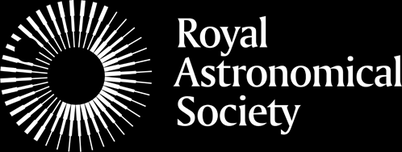This project has been supported by the Royal Astronomical Society Education & Outreach Small Grants Scheme.
You can see the winners' list here!
Outreach activities have also been supported by the Institute of Physics (Scotland) Public Engagement Grant Scheme.
All materials are licensed under a Creative Commons Attribution 4.0
You can read an article about my project in the Greek newspaper, to Vima, here!
The project idea has been presented at:
- Spathopoulos, V.M., “The Antikythera Mechanism: teaching astronomy with an ancient computer", Global Hands-On Universe, Virtual Conference, August 2022.
- Orkney International Science Festival, September 2022 (click here to see my talk, I am the first speaker)
- Orkney International Science Festival, September 2023 (click here to read an article in the Orkney News)
- Various schools in Scotland (including schools in remote areas such as Sanday Community School and Stronsay Junior High School)
- Various schools in Greece (see for example articles and pics, on visits to the primary and secondary schools of the island of Fournoi Korseon, here and here!)
- European School Bergen, Netherlands
- Athens College. Greece
The Antikythera Mechanism
In the summer of 1901, Greek sponge divers who had accidentally discovered an ancient shipwreck (dated to around 60 BCE) just off the Greek island of Antikythera, helped to retrieve from the sea an object that has fascinated scientists ever since. It is now known as the Antikythera Mechanism and for over a hundred years researchers have tried to uncover its secrets. Due to the ingenuity of modern scientists and also to the capabilities of modern technology, many of its amazing functions are now understood. Constructed sometime between the 2nd and 1st century BCE, it could be used to predict the position of the Sun and Moon (and most probably the visible to the naked eye planets), follow ancient calendars, predict the possibility of eclipses and to determine the occurrence of the ancient games such as the Olympics.
The Antikythera Mechanism was a product of the Hellenistic period (starting just after the conquests of Alexander the Great who reached from modern day Greece up to northern India), during which the ancient Greek civilisation came into direct contact with some of the great civilisations of the East. It encompasses much of the astronomical knowledge acquired over many centuries, not only from the ancient Greeks but also from civilisations such as the Babylonians and ancient Egyptians. The complexity of its design using dozens of gears was not seen again until the construction of clocks in the middle ages.
For this project a novel combination of the Google Earth and the freeware planetarium software Stellarium is used to reveal the history and the amazing capabilities of this wonderful device. Users are taken on a journey around the ancient world to those places and civilisations that influenced the design of the mechanism. By completing simple tasks in Stellarium, they gain a greater understanding of the astronomical concepts involved.
So if you want to embark on this journey, just click on the link below. Once Google Earth starts, hit the 'Present' tab and you are off!
Click below to start the journey:
Για την έκδοση στα ελληνικά, κάντε κλικ εδώ:






